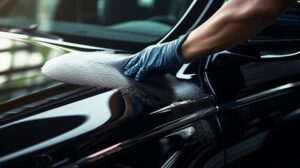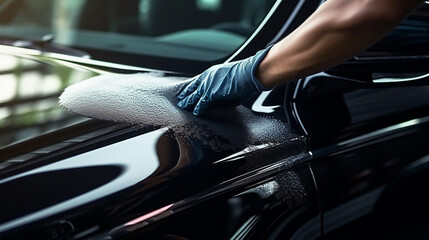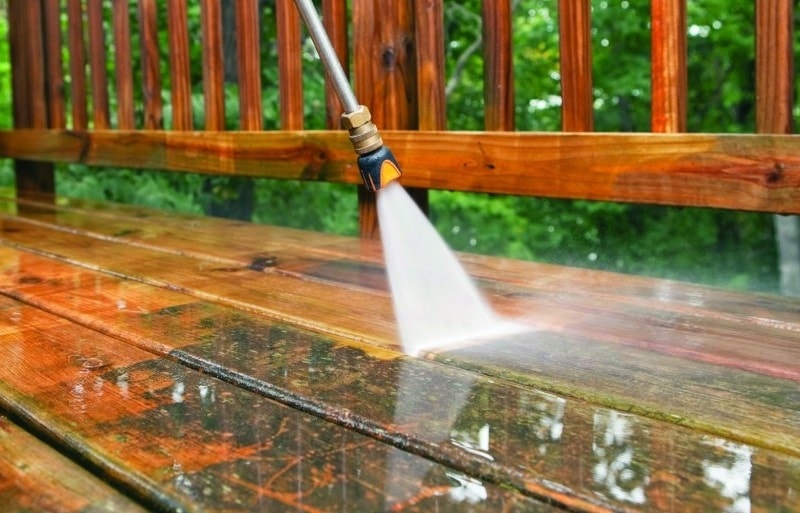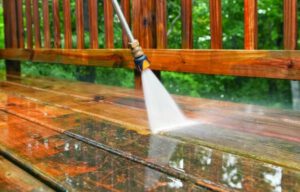Professional detailers clean cars to preserve their value. They offer more than just a standard car wash, with convenient and high-quality services.
Many mobile detailers use a business management app to keep track of their packages, pricing, estimates, and invoices. They also need durable vehicles that can haul their equipment. Keep reading the article below to learn more about Mobile Auto Detailing.
A vehicle’s exterior must be properly maintained to maintain a clean and bright appearance. The process includes cleaning the body, wheels, tires, and windows/lights. A professional detailing company can also apply surface protectants to enhance the durability and longevity of the finish. Depending on the packages offered by a particular detailer, the exterior may include an initial wash and dry or more in-depth treatments such as clay bar, polish, and wax.
Most mobile detailers will offer a basic package with all the necessary chemicals and equipment to perform the service, while others may choose to create tiered offerings to suit customer needs and budgets. Many detailers will utilize a business management app to set up their packages, pricing, estimates, and branded invoices to help streamline the detailing workflow.
It’s important to note that it’s always best to work indoors or in the shade when preparing the surface for a detail job, as most detailing products will react negatively to hot surfaces and direct sunlight. Additionally, it’s crucial to remove all personal accessories that could scratch or damage the various surfaces to be cleaned. For example, long necklaces and bracelets, rings, fanny packs, monocles, and chastity belts should all be removed before starting the detail.
The first step in a vehicle’s exterior detailing is steam cleaning, which will loosen any dirt and debris stuck to the car’s surface. After this, the surface should be washed with a quality degreaser and thoroughly rinsed off to remove all contaminants from the body of the vehicle. A good degreaser will also be effective at dissolving tar and bug stains as well as road grime.
Another vital component of any thorough exterior detailing is paint decontamination, which involves removing iron particles from the car’s paint that can cause unsightly rust spots. Once this is complete, the paint will be polished with a high-quality polish and wax to restore its original luster and protection against environmental contamination.
Lastly, a hydrophobic ceramic coating will be applied to the paintwork to repel contaminants and make hand washing easier. This will help to extend the life of the finish and keep it looking glossy for as long as possible. Aside from the cosmetic benefits, a ceramic coating will also protect against UV rays that can fade and yellow a vehicle’s paint over time.
Interior
When you opt for mobile detailing, professionals come to your location to perform cleaning and restoration tasks for a next-level clean. A variety of services are available, including cupholder cleaning, dashboard and vent cleaning, floorboard cleaning, odor removal, and more.
Typically, this service is much more affordable than in-shop detailing and can help you save time and effort. Moreover, it allows you to work around your busy schedule while still getting your car clean. In addition, a mobile detailer can provide you with detailed reports and pictures of the job completed so you can know exactly what was done.
A professional mobile detailer will first vacuum the interior and remove any removable items. Next, the seats and carpet will be shampooed, leaving them smelling fresh. They will also steam clean the AC vents to eliminate germs, mildew, and mold that may cause odors. Once the interior is clean, it will be wiped down and sanitized, and a non-fragrance air freshener will be sprayed throughout the vehicle.
In the end, a mobile detailing company will leave your vehicle looking like new and smelling great. It’s a fantastic option for anyone who doesn’t have the time or the inclination to do it themselves, but still wants their car to look its best. Plus, a mobile detailer can often offer you monthly packages for regular cleanings.
One of the biggest challenges for detailers is figuring out what equipment to invest in. The type of auto detailing equipment you need will depend on the services you plan to offer, the amount of space you have in your van, and your budget. Regardless of what type of equipment you choose, make sure you have the right tools and supplies to get started. Investing in quality towels, for example, is a sizeable yet invaluable investment that will save you a lot of time and effort. It’s also wise to buy a starter pack of cleaners, chemicals, and dressings that will allow you to offer an extensive range of services. Additionally, you should invest in an estimating and invoicing platform that can streamline management duties and reduce paperwork.
Headlights
Headlights are one of the most important safety features on your vehicle. They help you see the road in dark, rainy, or snowy conditions and allow other drivers to see your car. It is important to check your headlights regularly for damage or dimming. Headlights are also an important fashion statement for some people, who like to customize their car with different bulbs or coatings.
There are a variety of headlight options available, including halogen and LED headlights. Each type of headlight has its own benefits and drawbacks.
Halogen headlights produce a brighter light, but they can create glare that makes it difficult to see other cars or pedestrians. In contrast, LED headlights use a more natural white light that is less likely to cause glare. However, LED headlights are more expensive than halogen headlights.
Another headlight option is a fog lamp, which produces a low beam of light that illuminates the road in poor weather conditions. Fog lamps can be especially helpful when driving on wet or slippery roads.
A newer innovation in headlight technology is a curve-adaptive system. These headlights rotate in the direction of your steering wheel or even your speed, making it easier to spot obstacles on curvy roads.
In the early 1900s, automotive and lighting engineers began working together to design headlights that were more conducive to motor vehicles. They focused on creating a more satisfying, high-performance light that would improve night driving and visibility.
The first breakthrough came in 1908, when carbon-based headlight bulbs were introduced. These new lights were more powerful than their predecessors and allowed them to be used on a wider range of vehicles. In the decades that followed, lighting engineers worked hard to perfect their designs.
Today’s headlights are made of a variety of materials, from plastic to glass. The most common is a composite material, which allows manufacturers to shape the headlights in a variety of ways. They can also be coated in a ceramic material to add extra protection against UV rays. In addition to headlights, your car’s lighting system includes tail lights and indicator lights.
Tires
The tires are an essential part of any vehicle, providing grip, stability and safety. They are manufactured from a variety of components, depending on the type and use of a tire, but rubber is always the key element.
The latex of a tropical plant, Hevea brasiliensis or the “rubber tree”, is the primary source for natural rubber in tires, used for around 76 percent of all passenger tires worldwide. Its elasticity, durability and resistance to temperature changes make it an excellent material for tire production, while other materials, like silica, steel, nylon, and polyester, are used to reinforce the tire and improve its performance and safety.
Pneumatic tires are the most commonly used on motor vehicles today, with more than 200 million produced each year. They feature a molded rubber tread that creates the primary contact surface with the road, and a metal rim to hold them in place. Some have raised bars in the tread channels that indicate the wear of the tire, warning drivers when the tread is worn out and unsafe to drive on.
During the manufacturing process, tire manufacturers use different rubber compounds to achieve specific properties. For example, a special compound is added to the tread to reduce friction and increase mileage, while a softer compound provides traction and a smoother ride. In addition, the vulcanization process gives the tires their final shape and appearance.
Many large earth-moving machines, like forklifts, require tires with a high work load rating to withstand the constant stresses they face while in motion. These tires are marked with a unique identifier, the DOT Code (Dotted Tire Identification Number), which denotes tire size, construction, tread type and rubber compound. These identifying markings are molded onto the tire sidewall to make it easier for equipment operators to select the right tires for their jobs.



